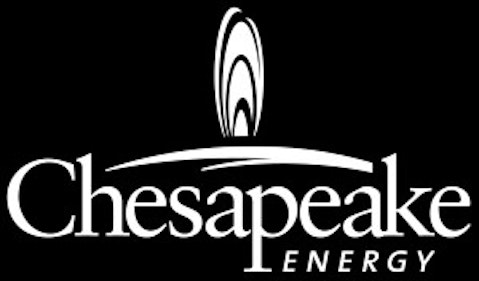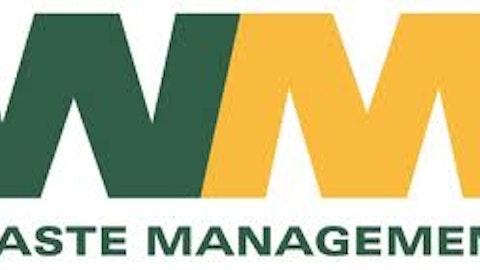
High spending, enormous risk appetite, and “perceived corporate governance lapses” have pushed investors to tone down risk-taking at these companies. Let’s use Chesapeake Energy Corporation (NYSE:CHK) as an example.
Chesapeake’s talent for producing natural gas – it is the second largest producer in the U.S. – led the firm to seek debt. That way it could produce even more natural gas. So long as gas prices stayed high, borrowing was a good (profitable) thing to do.
So Chesapeake Energy Corporation (NYSE:CHK) strapped itself with debt and trudged ahead. But when natural gas prices floundered, the company struggled. So, Chesapeake began divesting its assets to finance its expansion. And now? Founder Aubrey McClendon – who was on the cover of Forbes as recently as October 24, 2011 – is out. Apparently investors want Chesapeake Energy Corporation (NYSE:CHK) to be a different company.
I think that Chesapeake is not the exception, and that long-term low energy prices could create a new environment for exploration and production firms.
Improving Cash Flow
Wall Street Journal writer Liam Denning conducted an interesting study. He sampled all exploration and production companies with a market cap of $500 million or more. Here’s what he found.
In the year ended September 2003, for every dollar of cash flow per share, 80 cents went to capital expenditures. In other words, they spent well within their means. Consequently, net debt to cash flow fell from 1.61 times in September 2003 to less than .67 times three years later.
Then Energy Prices Fell
But then times changed. As natural gas and oil prices began to climb, companies became incentivized to produce greater quantities of energy. The obvious result is increased spending on production and research. And just like a homeowner that takes on a mortgage he can’t support, the problem happens when exploration firms keep large spending in place when energy prices fall.
And fall they did – right to earth. United States Natural Gas Fund, LP (NYSEARCA:UNG) fell from just under $50 in 2011 to a low of $14.25 last April. Realize that part of that price decline is caused from the costs of the ETF buying natural gas futures. However, supply factors like improved fracking technologies, new formations to drill, and the government’s reluctance to allow most natural gas exports, should keep prices from spiking any time soon.
Like gas, oil hit a rough patch. United States Oil Fund LP (ETF) (NYSEMKT:USO) traded in the mid-$40s in April of 2011, but fell below $30 in June of 2012. Right now the ETF is just above $33 with oil prices just below $93 per barrel.
Thankfully, exploration firms are able to drill for the more profitable oil right now. However, oil still remains approximately 36% below the extravagant highs it set in 2008, when it knocked on the door of $150 per barrel. Further, while supply and demand factors definitely move oil, OPEC has a tendency to significantly impact the price of oil.
With Prices Low, Things Got Bad
For the 12 months ended September 2012, Denning’s same $500 million market cap sample increased their debt to a staggering 1.44 times cash flow. And while cash flow per share for the sample peaked near $8 per share in 2008, cash flow per share has now slipped to just $5.
To make matters worse, capital expenditures, or CAPEX, have increased to $7.20 per share, representing 144% of cash flow. And no wonder the industry needs financed! Firms kept spending, even when energy prices dropped.
M&A Picks Up
Much like banks after the financial crisis, deleveraging needs to take place in the exploration and production sector. One way for this to happen is for firms to spin off assets. For example, Chesapeake could continue to sell off its joint venture interests and other holdings in an effort to stay capitalized.
Denning brings up two other good points. He cites Range Resources Corp. (NYSE:RRC) and Anadarko Petroleum Corporation (NYSE:APC) as two firms that could be taken over by a larger firm or financial buyer. For example, Range’s “liquids-rich reserves are tailor-made for the revival in U.S. petrochemicals manufacturing.”
Firms like Dow Chemical are producing plants that will utilize natural gas, because gas has become a cheaper input in Dow’s production process. So, it wouldn’t be a stretch to think that an industrial company could eye-up Range.
As for Anadarko Petroleum Corporation (NYSE:APC), Denning mentions that its mix of U.S. reserves and foreign projects could be attractive to an acquirer. The company’s $40.9 billion market cap would carry a hefty price tag, but a potential acquirer could purchase projects or business lines in pieces. Specifically, international projects can be a benefit because energy prices in foreign areas like Europe and Asia trade at higher levels than in the U.S.
Overall, in this market exploration and production companies need to tighten their belts and clean up their balance sheets. Otherwise, there could be an intervention by someone else who can.
The article Will Someone Please Clean Up These Dirty Balance Sheets? originally appeared on Fool.com and is written by Chris Marasco.
Copyright © 1995 – 2013 The Motley Fool, LLC. All rights reserved. The Motley Fool has a disclosure policy.




